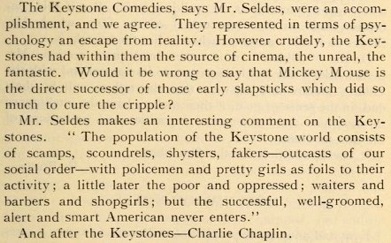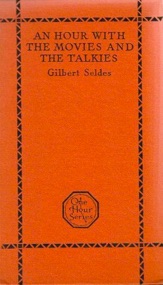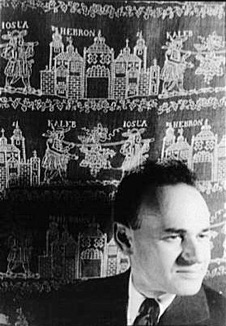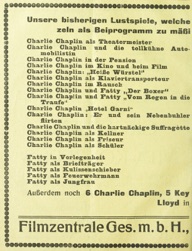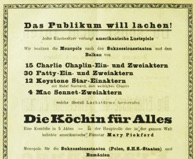Getting Acquainted next previous
Getting Acquainted Clippings 21/21
R. Bond, Close Up, Territet, Switzerland, October 1930.
Gilbert Seldes, An Hour with the Movies and the Talkies,
One Hour Series, Philadelphia 1929
& Carl Van Wechten (photographer), Gilbert Seldes, 1932
& Das Publikum will lachen!
Jeder Kinobesitzer verlangt amerikanische Lustspiele
Wir besitzen die Monopole nach den
Suksessionsstaaten und dem Balkan von
16 Charlie Chaplin-Ein- und Zweiaktern (...)
Filmzentrale Ges. m. b. H
(...) Kino-Journal, Wen, Dec. 23, 1922
& Unsere bisherigen Lustspiele, welche sofort für
Lustspielabende oder einzeln als Beisprogramm zu mäßigen
Preisen vermietet werden:
Charlie Chaplin als Theatermeister
Charlie Chaplin und die tollkühne Automobilistin
Charlie Chaplin im Kino und beim Film
Charlie Chaplin: „Heiße Würstel“
Charlie Chaplin als Klaviertransporteur
Charlie Chaplin im Rausch
Charlie Chaplin und Fatty „Der Boxer“
Charlie Chaplin und Fatty „Vom Regen in die Traufe“
Charlie Chaplin „Hotel Garni“
Charlie Chaplin: Er und sein Nebenbuhler flirten
Charlie Chaplin und die hartnäckige Suffragette
Charlie Chaplin als Kellner
Charlie Chaplin als Friseur
Charlie Chaplin als Schüler (...)
Filmzentrale
Ges. m. b. H.
Wien VII., Karl Schweighofergasse 7
(...) Filmbote, Wien, Nov. 25, 1922
„Mickey Mouse is the direct successor“
Editorial content. „The Keystone Comedies, says Mr. Seldes,
were an accomplishment, and we agree. They represented
in terms of psychology an escape from reality. However crudely,
the Keystones had within them the source of cinema, the
unreal, the fantastic. Would it be wrong to say that Mickey Mouse
is the direct successor of those early slapsticks which
did so much to cure the cripple?
Mr. Seldes makes an interesting comment on the Keystones.
,The population of the Keystone world consists of scamps,
soundrels, shysters, fakers – outcasts of our social order – with
policemen and pretty girls as foils to their activity; a little
later the poor and oppressed; waiters and barbers and shopgirls;
but the successful, well-groomed, alert and smart American
never enters.
And after the Keystones – Charlie Chaplin.“
David Robinson mentions Chaplin‘s Keystone
Comedies rather shortly. He also speaks
about an accomplishment. David Robinson doesn‘t love
Chaplin‘s Keystone Comedies. He says they are
comic strips. But he doesn‘t love comic strips either. Strange
when you think about the wonderful world
of George Herriman‘s Krazy Kat. David Robinson doesn‘t
mention Seldes‘ book An Hour with the Movies
and the Talkies, although Gilbert Seldes follows the same
trace of detestation. In reality Charlie Chaplin
is within the Keystones, not after them. „Keystone films,“
Robinson writes, „derived from vaudeville, circus,
comic strips, and at the same time from the realities of early
twentieth-century America.“ (...) „The film“ it is
Caught in the Rain. „shows all the care of an apprentice‘s
demonstration piece.“ (...) „The anecdote is
absurd, but the telling is exemplary, and this remains
one of the most accomplished films of Chaplin‘s
year at Keystone.“ (...) „The animated strip cartoon of Caught
in the Rain has developed into comic drama.“
Redaktioneller Inhalt
Bei der Chaplin Retrospektive im Filmmuseum Wien
2009/2010 ist im Vorschautext zu den Keystone
Comedies von „Gesellenstück“ und „Meisterprüfung“ die Rede,
als Chaplin selbst Regie zu führen beginnt.
In den Folgejahren tauchen die Werturteile auch andernorts
in Vorschautexten Kommunaler Kinos wieder
auf. Die Quelle selbst bleibt stets ungenannt. Der von
„Gesellenstück“ und „Meisterprüfung“ redet,
ist David Robinson, in der deutschen Übersetzung
seiner Chaplin-Biographie. „Er“ Die Rede ist
von Caught in the Rain. „ist mit der ganzen Sorgfalt eines
Gesellenstücks gemacht.“ Das Ergebnis meiner
Recherche ist genau das Gegenteil. Chaplin, bereits der Star
der Music Hall in den USA schlechthin, hat bei
Keystone keinerlei „Ausbidung“ durchlaufen. Er ist von
Anfang an da, von der ersten Sekunde an.
Getting Acquainted next previous

